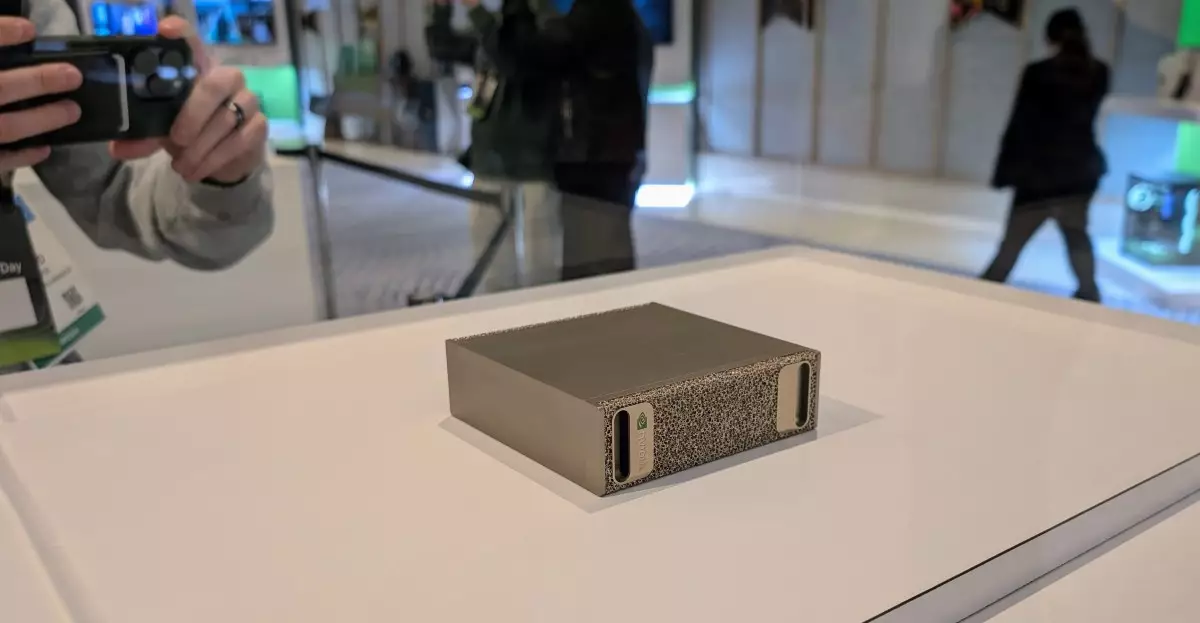In the dynamic landscape of technology, the introduction of AI supercomputers has emerged as a game-changer for both enterprises and consumers alike. With leaders like Asus, Dell, and HP venturing into this realm powered by Nvidia’s innovative Grace Blackwell platform, we are witnessing the birth of a new wave of computing capabilities that could redefine how we interact with technology. This article delves into the exciting advancements and implications of these mini supercomputers, examining the technological nuances and potential impacts on the market.
Empowering a New Era of Computing
Nvidia, a frontrunner in graphics processing units (GPUs), recently unveiled its own personal AI supercomputer, generating a significant buzz in tech circles. While the spotlight is on Nvidia’s offerings, the company’s willingness to license its technology to third-party manufacturers is paving the way for something unprecedented. This move empowers Asus, Dell, and HP to harness the formidable capabilities of Nvidia’s GB10 super chip, enabling them to craft their own iterations of powerful computing machines.
Among the first, Asus has introduced the Ascent GX10, a mini PC that boasts impressive AI processing power rated at 1,000 TOPS and unified memory of 128GB. The design, featuring a minimalist aesthetic with a consumer-friendly white plastic chassis and a unique carved pattern, speaks volumes to Asus’s intent to appeal to a broader audience. While details regarding pricing and availability remain scarce, the potential for the GX10 to handle AI workloads positions it as a promising contender in the market.
The Premium Touch: HP’s ZGX Nano AI Station G1n
In the race for technological superiority, HP’s ZGX Nano AI Station G1n stands out with its premium design reminiscent of the sleek Z2 mini workstation. Designed for integration into server racks, this mini-computer illustrates HP’s ambition to target both enterprise environments and consumer markets. Its understated elegance signals that in the world of AI computing, aesthetic appeal does not have to come at the expense of functionality. This development proposes an amalgamation of cutting-edge technology with consumer-centric design—a desirable combination in today’s market.
Furthermore, as businesses increasingly rely on AI for decision-making and operational efficiency, the ZGX Nano could become a staple in corporate settings, marrying design and performance effectively.
Dell’s Pragmatic Approach with the Pro Max
Dell’s foray into the AI supercomputer arena is marked by its DePro Max With GB10, a machine characterized by its no-frills, industrial appearance. While not the most visually striking, this pragmatic design encapsulates Dell’s strategic strategy: deliver functional hardware capable of performing at high levels. The power button located on top may raise some eyebrows, particularly for server rack enthusiasts; however, usability may not be the strong suit of every device in this category.
What stands out is Dell’s broader roadmap, which includes the ambitious Pro Max with GB300—a workstation flaunting an astonishing 20 petaflops of AI performance. Set to launch alongside Nvidia’s DGX Spark in mid-2025, Dell is clearly positioning itself as a stalwart in high-performance AI computing.
Looking Ahead: The Competitive Landscape
The competitive landscape in the mini-supercomputer market is heating up, with other manufacturers like Lenovo also eyeing the potential of Nvidia’s GB10 platform. Although specific details about Lenovo’s plans remain under wraps, the anticipation builds around its potential entry into this burgeoning marketplace. Each player’s approach to technology will hint at the overall trend of consumer-focused supercomputing.
While raw performance metrics paint an impressive picture, the real challenge lies in how these mini supercomputers will be integrated into daily life. If priced affordably enough, these devices could democratize access to AI technology, allowing consumers—from creative professionals to technophiles—to leverage AI in ways that were previously unimaginable.
As Asus, Dell, HP, and others step into the rapidly evolving field of AI supercomputing powered by Nvidia’s Grace Blackwell platform, we find ourselves on the cusp of a technological revolution. The implications of these devices stretch beyond technical specifications, touching lives and industries in transformative ways. It is an exciting time to watch how consumer demand shapes the future of computing, inviting innovation, creativity, and a redefinition of our interaction with technology.


Leave a Reply